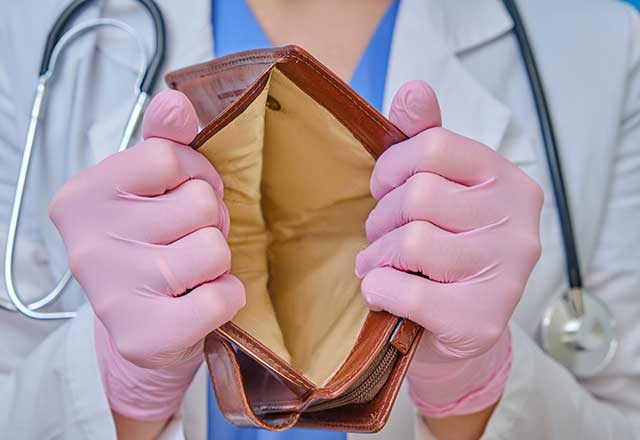In 2017, despite how thrilled I was to begin studying medicine at my dream school, Johns Hopkins, I spent many anxious moments wondering how I would repay my medical student debt. While I studied all night for exams on anatomy and physiology, my loans were continuously collecting interest at a rate of about 6%. I could never have predicted that my final year of school would have been turned upside down by a global pandemic. However, between the quarantines, virtual classes and volunteering at community testing sites, I noticed that my loans had stopped growing.
Pandemic Stress, Financial Relief
As the pandemic began to take hold last year, I stressed about the health and safety of my family members, and they worried about me as I donned my N95 and rejoined the medical wards. Yet, emergency grants and stimulus checks collected in my bank account. The interest collecting on my loans dropped to 0%. For the first time in many years, from a financial perspective, I was finally catching a break.
The CARES Act was an unexpected benefit of the COVID-19 pandemic that took the edge off of my financial worries last year. In a rare move, Congress paused interest from accruing on unsubsidized student loans, lowered interest rates for newly initiated loans and provided emergency payments to students. With these incremental changes, I calculated that I saved nearly $12,000 due to the relief measures put in place since the start of the pandemic. Since I have less than the national average debt burden for medical students (which this year is $241,600, including pre-medical and other educational debt), the amount saved was likely even higher for the average medical graduate.
In a perfect world, Congress would cancel student debt for everyone, and students of all professions could pursue their career goals unburdened by that psychological weight. While I believe we should keep pushing for dramatic structural change to make higher education more affordable for everyone, the last year showed me how helpful incremental cumulative changes can be when it comes to student debt relief.
An Opportunity for Change
This led me to wonder: Why did our pre-COVID-19 system add insult to injury for medical students by only providing us with the least favorable student loan options? Unlike undergraduate students, medical students are not eligible for subsidized loans. That means our loans accumulate compound interest while we are in school, rather than pausing interest accumulation until our studies are completed. Additionally, most medical student loans charge an interest rate of 6% or more — nearly double the rate of a typical mortgage. Our demanding clinical schedules do not allow us to work part time to earn additional income.
The policy changes made during the COVID-19 pandemic to relieve student debt showed me it need not be an impossible task to make medical school more affordable. Even while we wait for grander policy reforms, we could make choices in the meantime that lead to measurable improvements to medical students’ quality of life. Lowering interest rates from 6% to 2%, allowing medical students to benefit from subsidized loans and providing more government grants — in other words, prolonging the changes that were made during the pandemic — would be excellent initial strategies. If we want to create a robust health care force that can lead us through the next pandemic, we need to enact policies that make medical school a financial possibility for all brilliant minds, regardless of their socioeconomic background.
[themify_hr]
Related Content
- Equal Access for Trainees in the Wake of COVID-19
- On the Front Lines: From Coronavirus Vaccine Trial to Distribution
- Fellowship Experience During a Pandemic
- Are Physician Salaries Appropriate?
Want to read more from the Johns Hopkins School of Medicine? Subscribe to the Biomedical Odyssey blog and receive new posts directly in your inbox.

Pingback: Coping With Pandemic Fatigue | Biomedical Odyssey
Comments are closed.